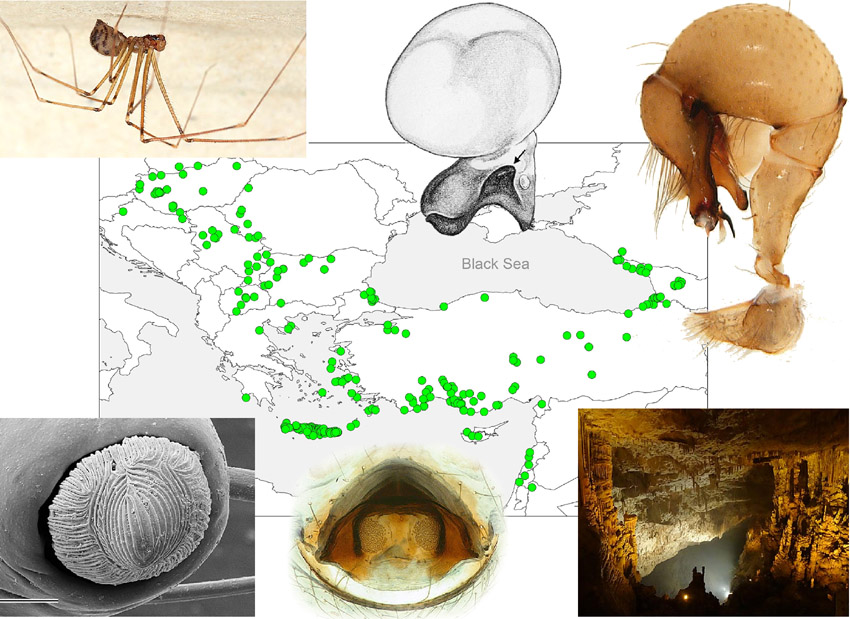One major goal of this work was thus the clarification of species limits. Another motivation was the need to gather data for a comprehensive morphological cladistic analysis of Smeringopinae. The two Subsaharan genera Smeringopus and Smeringopina have been treated previously (Huber 2012, 2013), and Hoplopholcus is the first genus of the ‘northern clade’ to be revised comprehensively.
A main conclusion is that several species need further investigation, based on focused sampling and ideally including molecular data. Some species seem to include morphologically distinct epigean and hypogean populations; others may eventually need to be split into two or more species. Further undescribed species are most likely to occur in Turkey.
